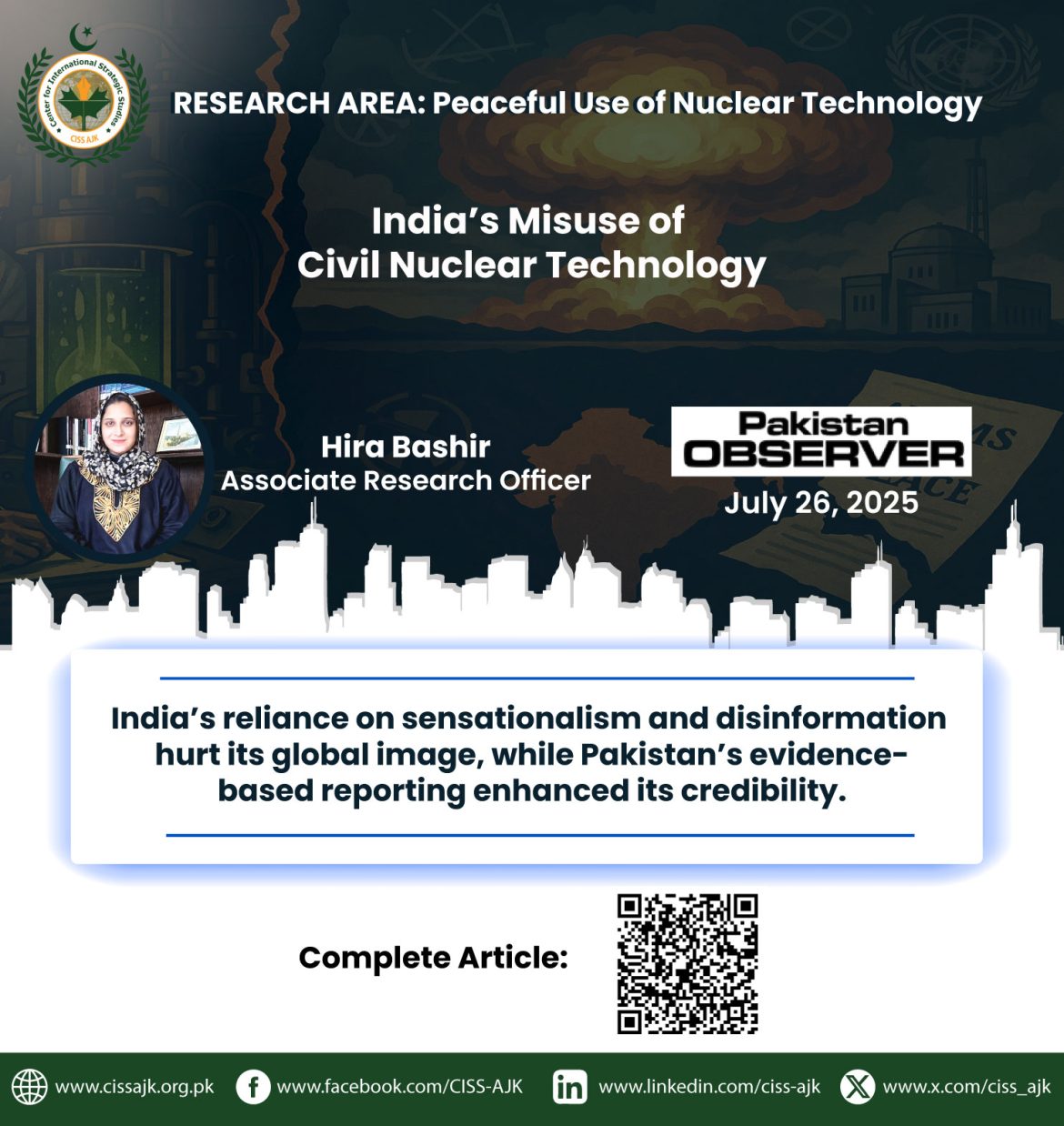THE global nuclearization campaign began in the early 1940s with the US Manhattan Project, which transformed uranium into radioactive elements.
In 1945, the US dropped “Little Boy” and “Fatman” on Hiroshima and Nagasaki, marking the dawn of the nuclear age. Following World War II, Cold War tensions sparked the rise of nuclear powers, leading to the manipulation of treaties and the diversion of peaceful nuclear programs into weapons development by aspiring nations.
The “Atoms for Peace” initiative, launched by the US in 1953, was intended to promote peaceful nuclear technology worldwide. However, India exploited this program to advance its covert nuclear weapons development. While the initiative sought to spread nuclear energy for peaceful purposes, India used the nuclear assistance provided to secretly build its weapons capabilities. This exploitation was evident in the 1970s when India conducted a series of covert nuclear tests, despite publicly advocating for disarmament.
India’s nuclear strategy was driven by its desire for regional dominance and strategic autonomy. In 1974, India carried out its first nuclear test, “Smiling Buddha,” claiming it was a peaceful nuclear explosion (PNE) for regional stability. This test not only violated international norms but also exposed the failure of global safeguards, as India used the peaceful nuclear technology from the “Atoms for Peace” program to develop nuclear weapons. The US State Department had warned India that a “peaceful nuclear explosion” was indistinguishable from a weapons test and such actions would breach their nuclear assistance agreements. Despite these warnings, India continued its pursuit of nuclear weapons.
The international nuclear non-proliferation regime, including the IAEA, struggled to prevent the diversion of nuclear materials for military purposes. Canada, which had supplied the CIRUS reactor to India, raised alarms about India’s growing nuclear capabilities. Despite Canada’s warnings, India’s nuclear ambitions persisted, leading to the 1998 tests when it officially declared its nuclear capability. This marked a shift in India’s nuclear posture, integrating nuclear weapons into its military strategy.
India’s actions revealed significant flaws in the global non-proliferation efforts. Despite treaties and safeguards, countries with strong political will, like India, can exploit loopholes to pursue their nuclear goals. India’s manipulation of the “Atoms for Peace” initiative demonstrated the weaknesses in the global effort to prevent the spread of nuclear weapons, highlighting the need for more effective monitoring and stronger international controls.
India’s use of the “Atoms for Peace” program to build nuclear weapons not only highlights its deceit towards the West but also exposes significant flaws in the global effort to prevent the spread of nuclear arms. Even though there are treaties and safeguards in place, but states can still find ways to exploit loopholes and pursue their nuclear goals. India’s actions remind us that the international community must work harder to monitor and control the use of nuclear technology. While the world has tried to regulate nuclear development, the drive for national security often overshadows global non-proliferation efforts.
—The writer is an Associate Research Officer at the Centre for International Strategic Studies, Azad Jammu & Kashmir.
(hirakhan5090@gmail.com)



